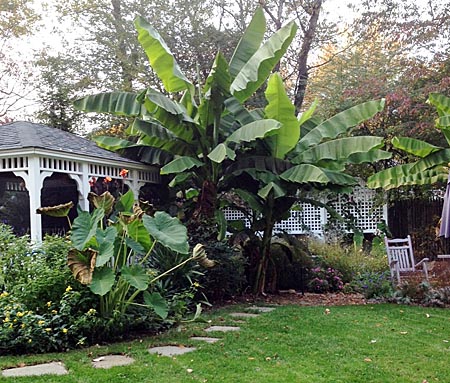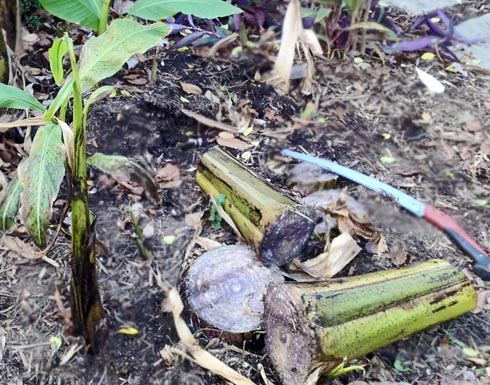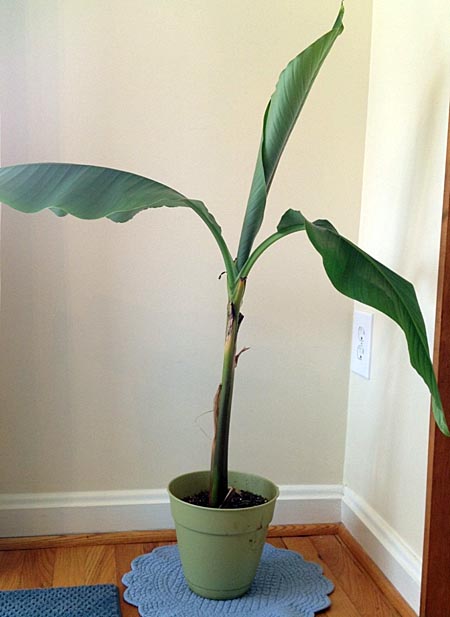Going Bananas in Fairfax
By Gil Medeiros, Fairfax Master Gardener
If you are interested in creating tropical landscapes at mid-Atlantic latitudes, you may have planted windmill palms (Trachycarpus fortunei) in your yard. The palm is, after all, the quintessential tropical specimen, and windmill palms are hardy down to about 10 degrees F. The windmills did well here for a few years. Then came the Polar Vortex winter of 2013-2014, when temperatures fell to near zero, and many of us were reminded that we really are in USDA hardiness zone 7a. Sadder but wiser, we watched our unprotected windmill palms perish.

Banana plants growing in Falls Church
These bananas are incredibly easy to grow. The colony pictured above grew from a single plant in a 4-inch pot! It took about four years to achieve this size.
Musa basjoo must be planted after all threat of frost has passed because the top growth is not cold hardy. Only the roots and rhizomes survive the winter.
I have grown them in full sun and part shade, but they grow best in full sun. They will grow very slowly in shade, and the rhizomes do not reliably survive the winter if the plant did not receive adequate sun during the growing season. There is little or no maintenance during the growing season, save for removing an occasional leaf that has been tattered by wind.
The plants spread rhizomes underground over the years and form a colony, the largest members of which grow to about 15 feet high. The colony can be controlled by pruning out new shoots as they emerge from the ground in April and May.

Cutting down after frosts killed most growth
In 2015, I covered the colony shown above with a foot of mulch, a depth that required about three bags of hardwood mulch. So far, there are no pest or disease problems. I have not even fertilized them.
You are probably wondering whether the plants produce edible bananas. The answer is no; these are strictly ornamentals. In places with longer growing seasons, the plants produce small, fibrous bananas that are inedible. The season is not long enough here even to produce flowers.

Musa basjoo in a pot
Some local garden centers carry small Musa basjoo plants from time to time, but your best bet is to Google an online source. Because these plants are so easy to propagate, they are inexpensive. So, if you like the tropical look in your landscape, give Musa basjoos a try.